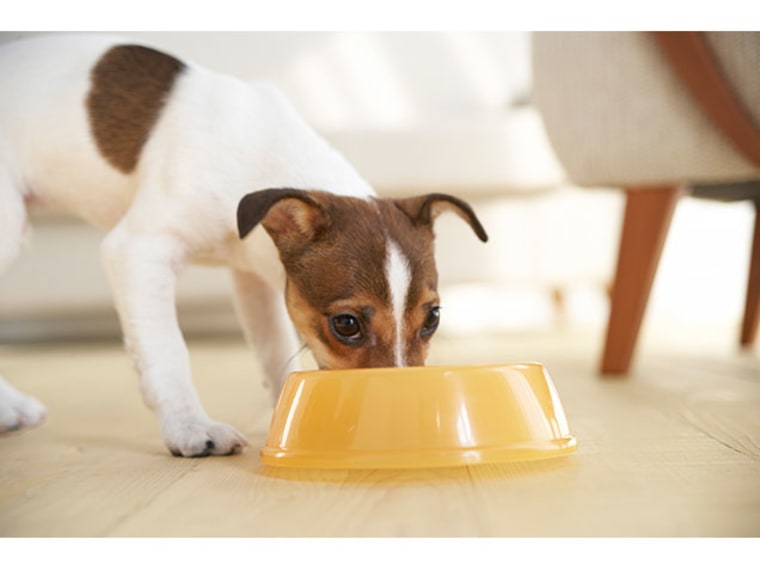Have you walked down a pet food aisle lately? Not too long ago, your options were limited to wet and dry food. But these days, there are tubes, boxes and cans of gluten-free, grain-free, organic, all-natural, limited ingredient and raw food. It’s enough to make your head swim. So we turned to two leading pet nutritionists for their take on feeding your four-legged friend, and got their expert advice on how to do it the right way.
How much should I feed my pet?
Pets are natural-born beggars (we’re looking at you, pup!), and it’s all too easy to give in when they ask for scraps. But too much food is just as bad for your dog or cat as too little, says Dr. Tony Buffington, a board-certified veterinary nutritionist and professor at Ohio State University College of Veterinary Medicine.
So how much should you feed them? Short answer: Whatever it takes to keep your pet lean, Dr. Buffington says, meaning you can easily feel its ribs and see its waist when looking from above. For specific amounts, just ask your vet or follow the food manufacturer’s suggestions on the label.
When you’re shopping for food, don’t forget to look at the calorie count. It can vary by brand anywhere from 250 to a whopping 500 calories per cup. Not sure how many calories your pet should consume? Check out the World Small Animal Veterinary Association’s Nutrition Toolkit for general guidelines.
How often should I feed my pet?
For pets under 6 months of age, consult your vet. Otherwise, a good rule of thumb is twice daily for dogs and cats older than 6 months, according to Dr. Laura Eirmann, a board-certified veterinary nutritionist at Oradell Animal Hospital in Paramus, N.J. But don’t worry if your pet doesn’t finish its meal every now and then, so long as it’s otherwise healthy and not losing weight. Keeping dry food out for all-day noshing is okay for one-pet households, she says. Just be sure you’re keeping track of your dog or cat’s weight, so you don’t overfeed.
Or, try Dr. Buffington’s fun alternative approach to feeding healthy indoor pets. Put dry kibble in food dispensing toys, also called food puzzles. (Kong is a popular one.) These toys make your pet work for its food but also sneak in some mental and physical stimulation.
Does it matter if my pet eats dry or wet food?
Not really, since either type can satisfy their nutritional needs. The key is to look at the label before you buy. It should say that the food complies with the guidelines of the Association of American Food Control Officers (AAFCO). That means it’s nutritionally complete, balanced, and appropriate for your pet’s age. Of course, if your dog or cat has a specific nutritional need, always follow your vet’s recommendations.
Do I really need to read the list of ingredients on my pet’s food?
Unless your pet is sensitive to a particular ingredient, don’t bother, say our experts. The list gives no indication of quality or amount. Again, what’s more important is that somewhere on the label, there’s a guarantee that the food meets AAFCO standards.
What’s the deal with raw food? Is it safe for my pet?
There’s been a lot of hype surrounding the raw diet, but it’s been rejected by two major organizations, the American Veterinary Medical Association and the American Animal Hospital Association. Besides the fact that it hasn’t been shown to offer any added nutritional advantages, a raw diet can easily be contaminated and make you and your pet sick. Still, if you believe a raw diet is best for your pet, Dr. Buffington suggests following an AAFCO-approved raw diet and using proper techniques for handling food and treats safely.
Karen B. Gibbs is a freelance writer living in Lacombe, La.
A version of this story originally appeared on iVillage.
